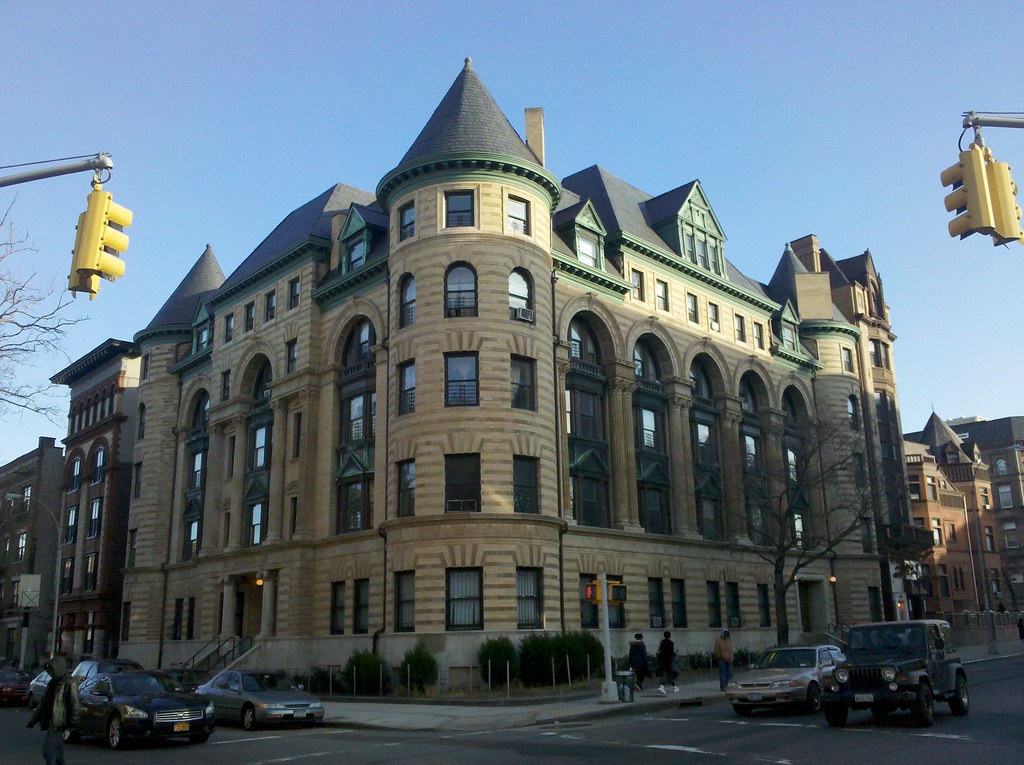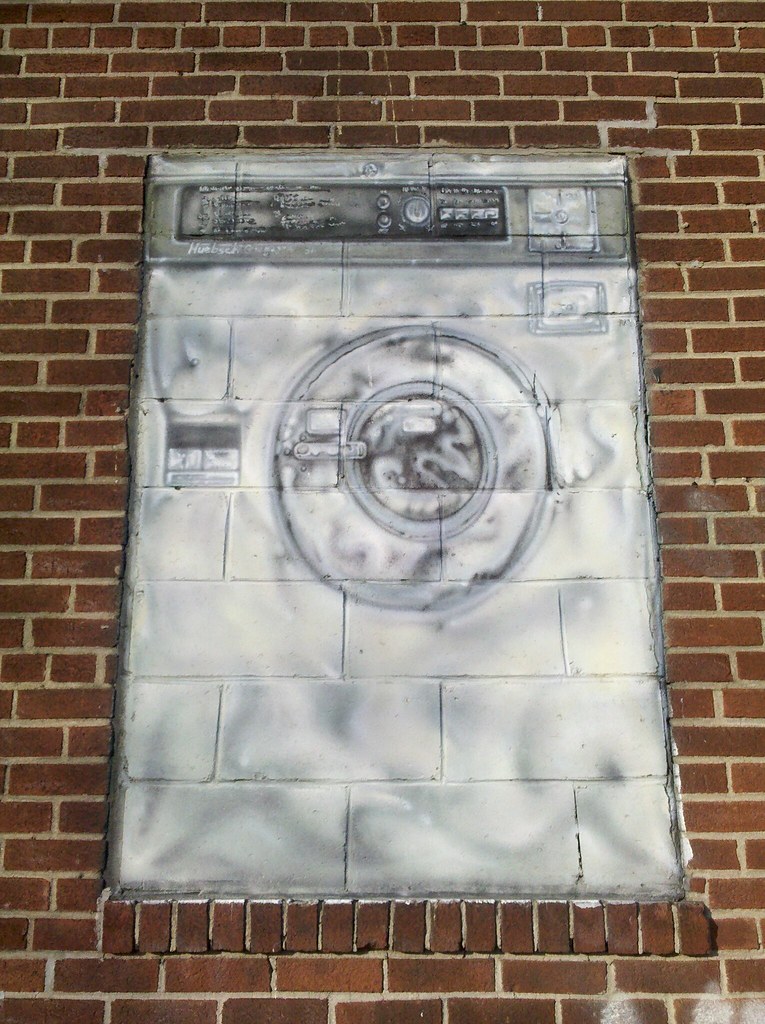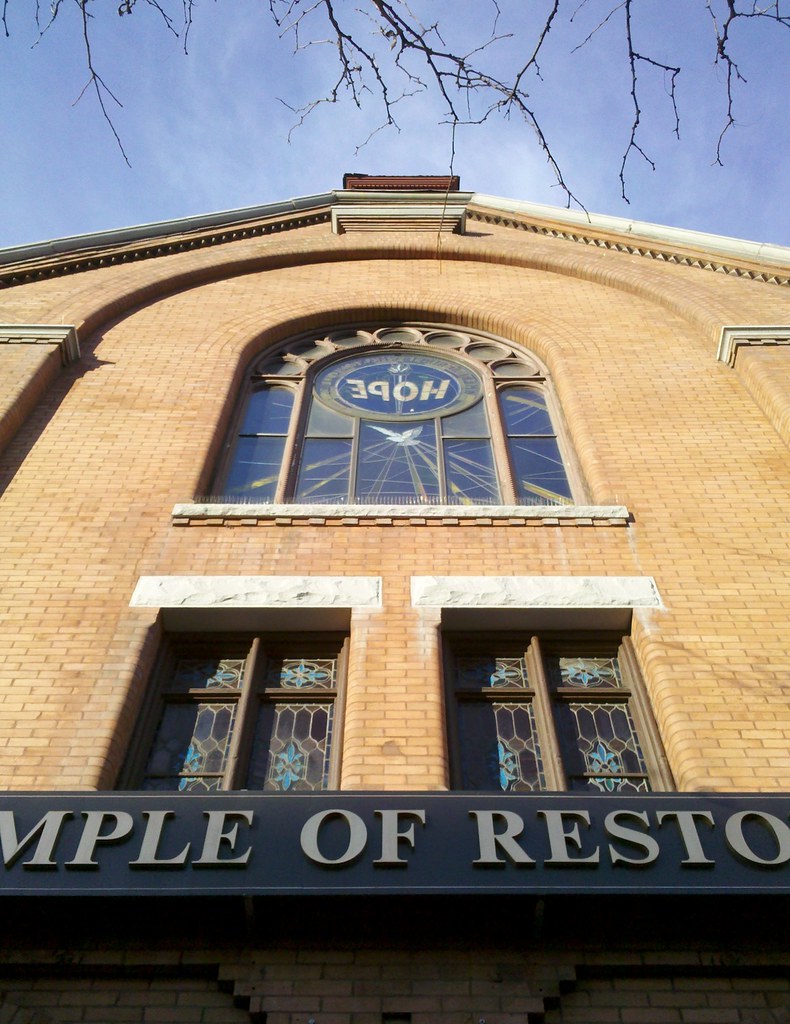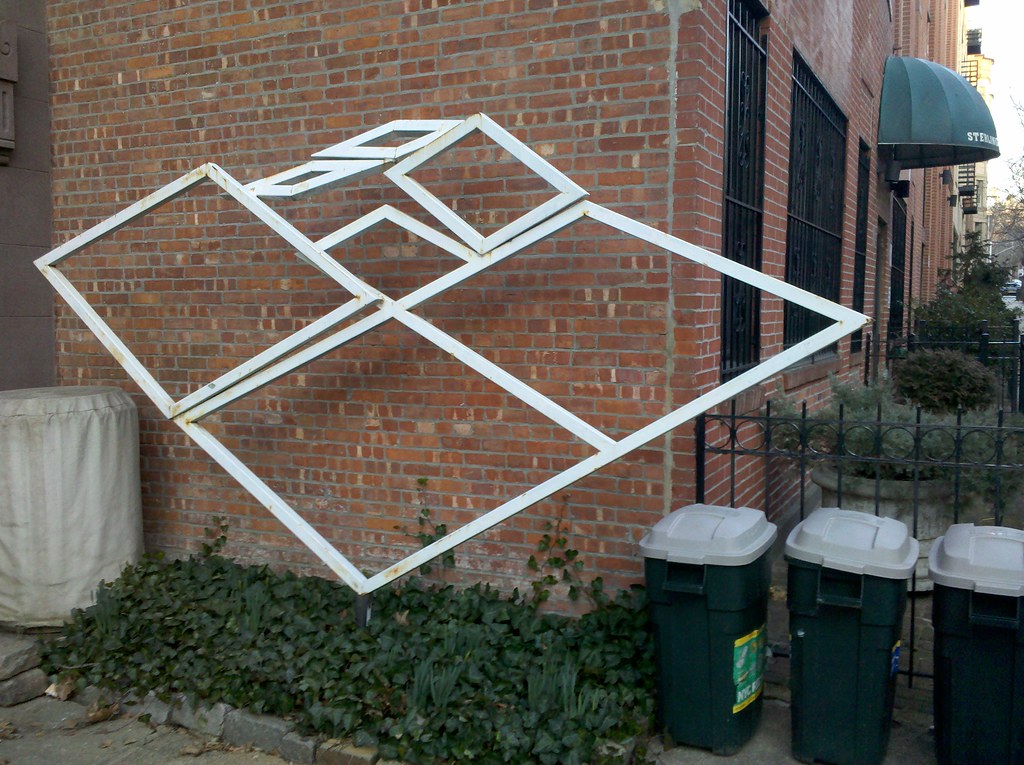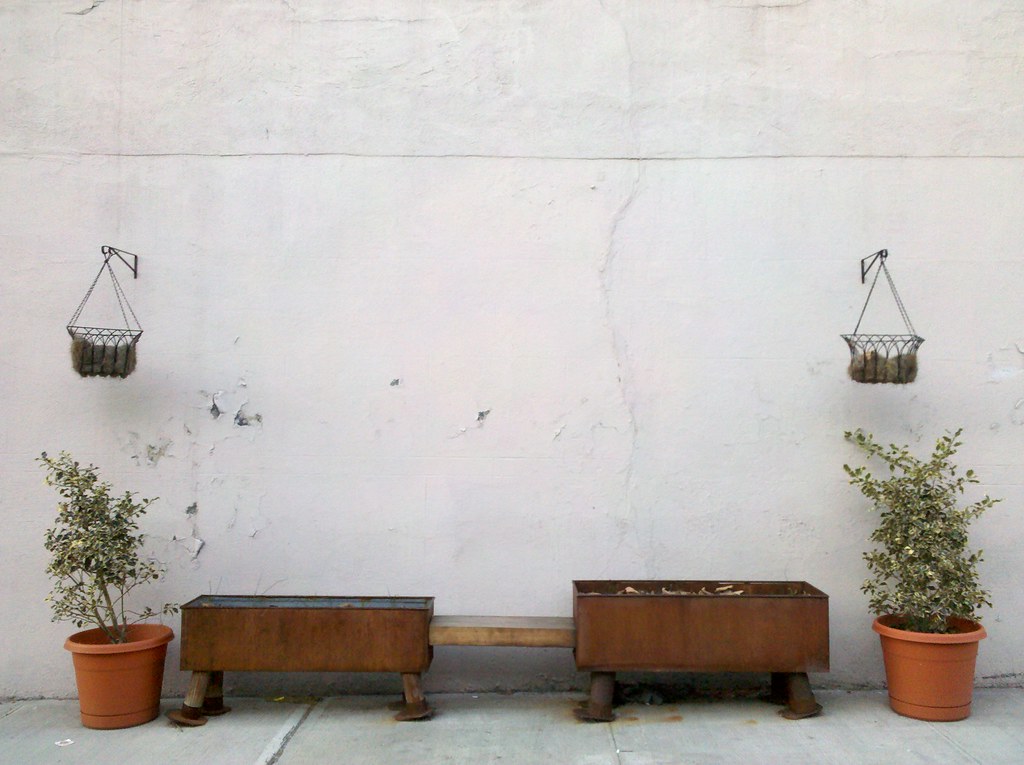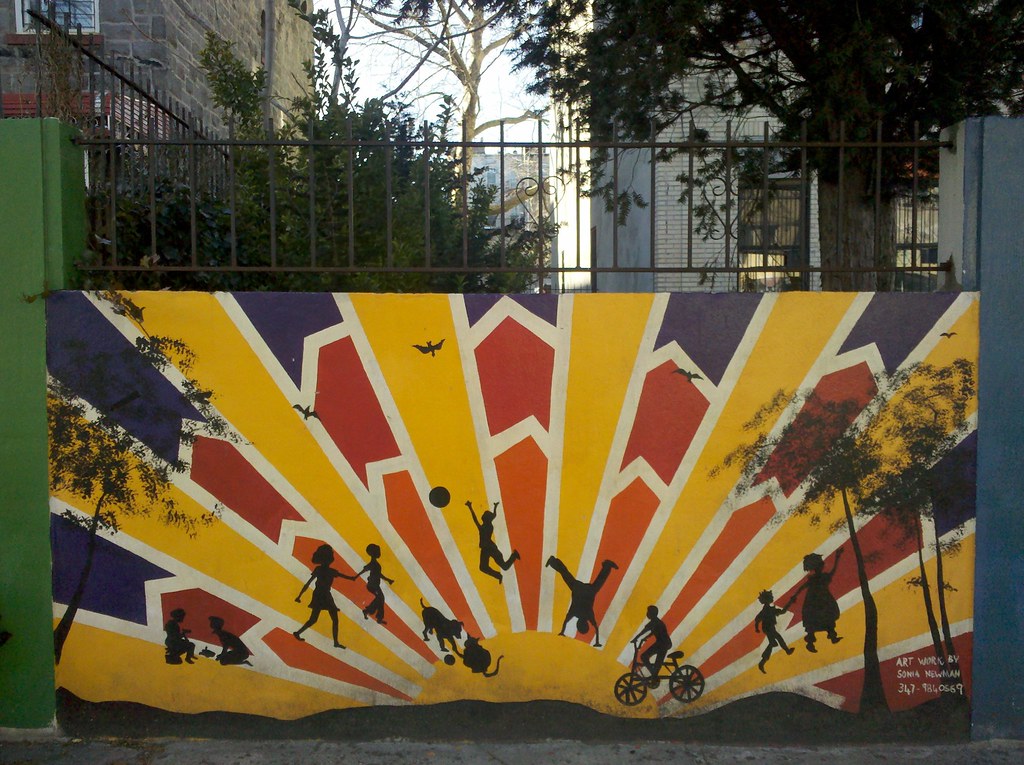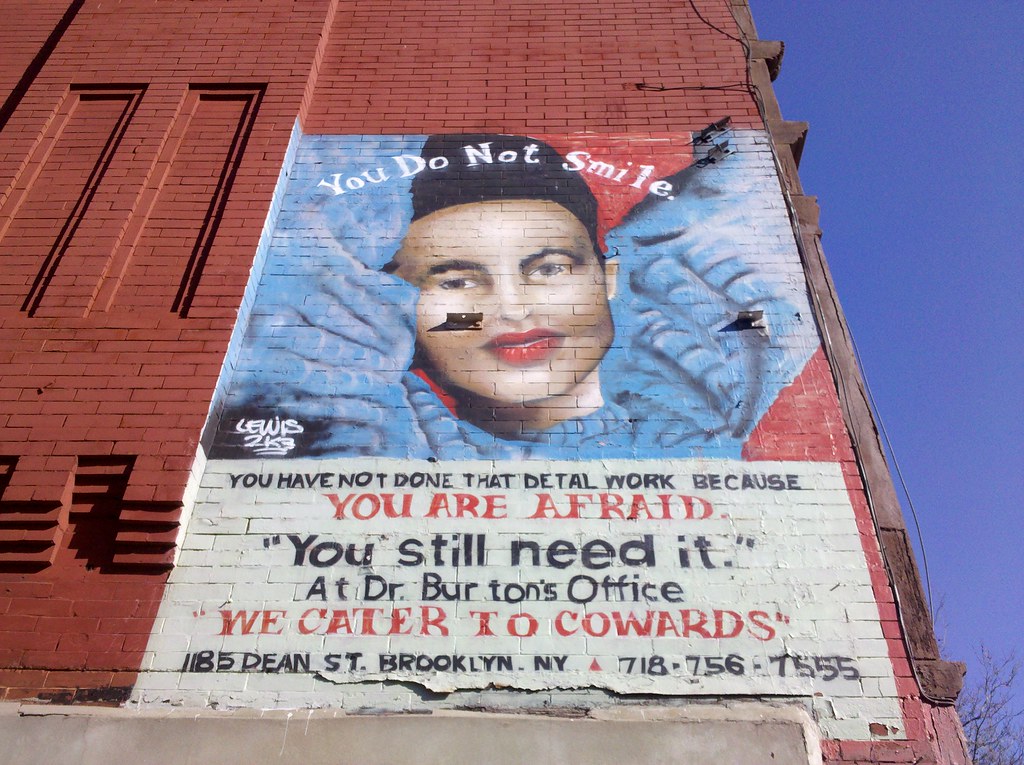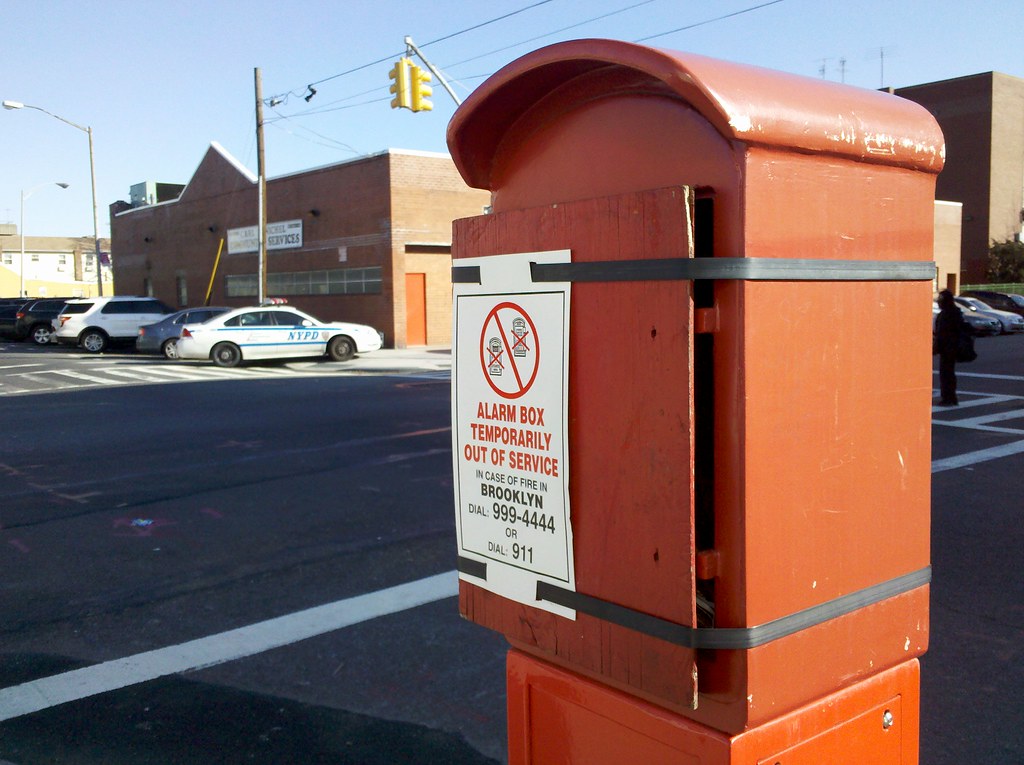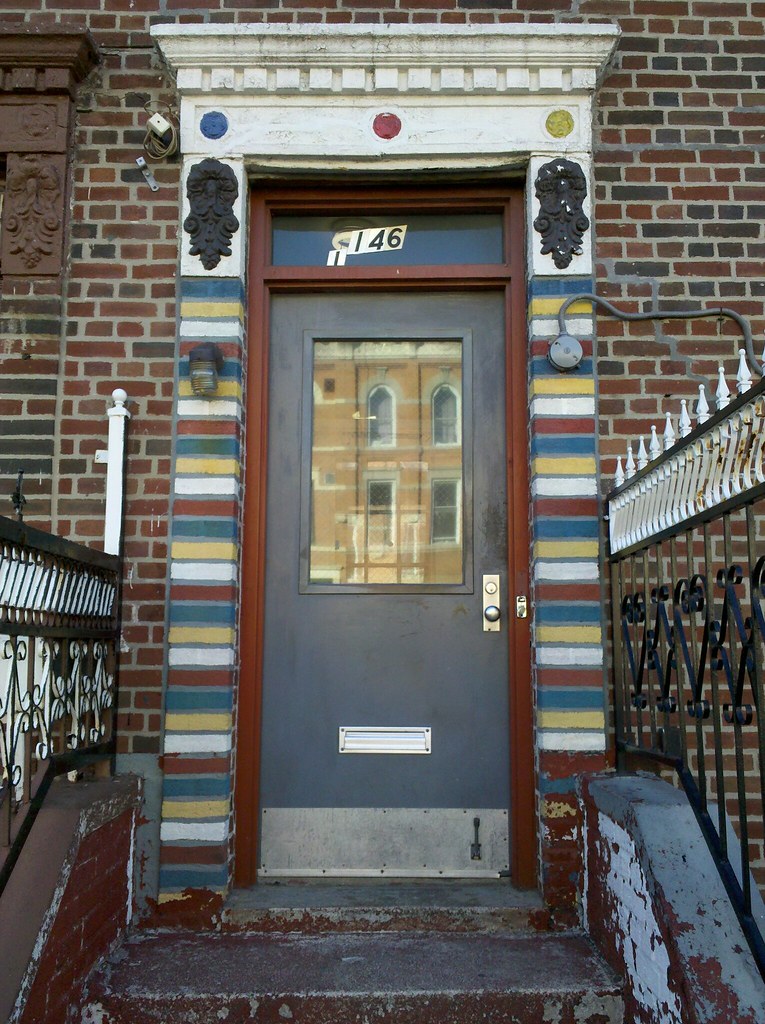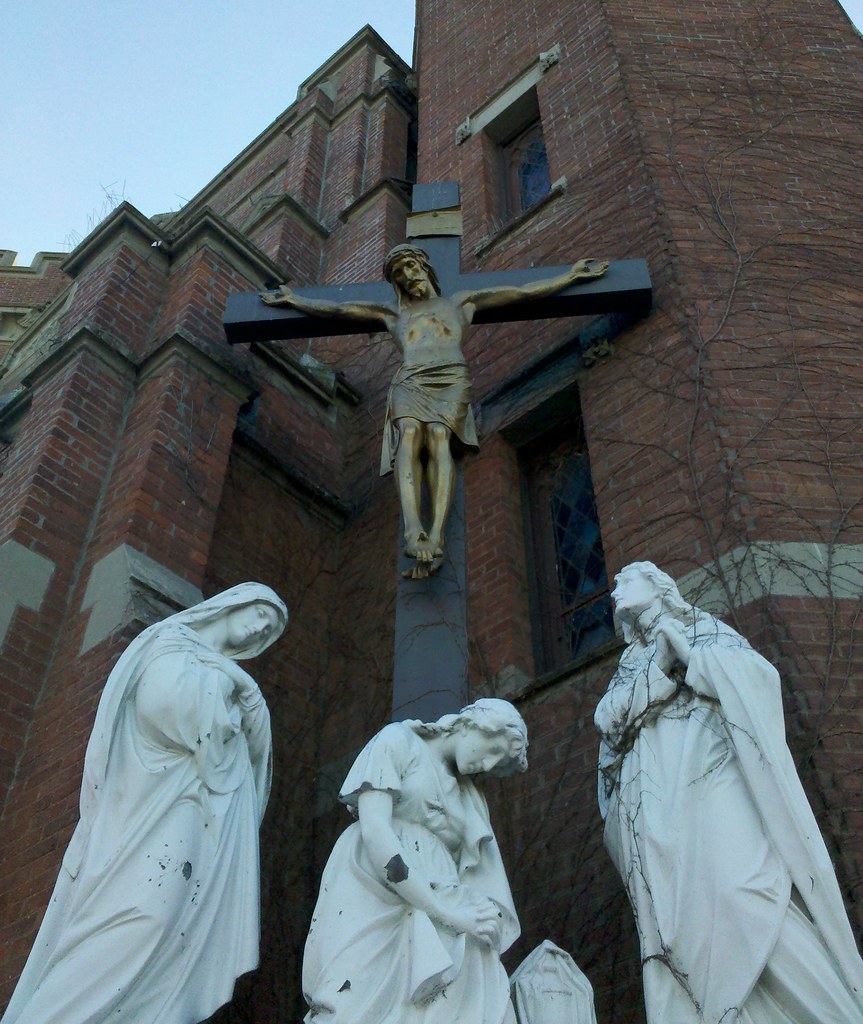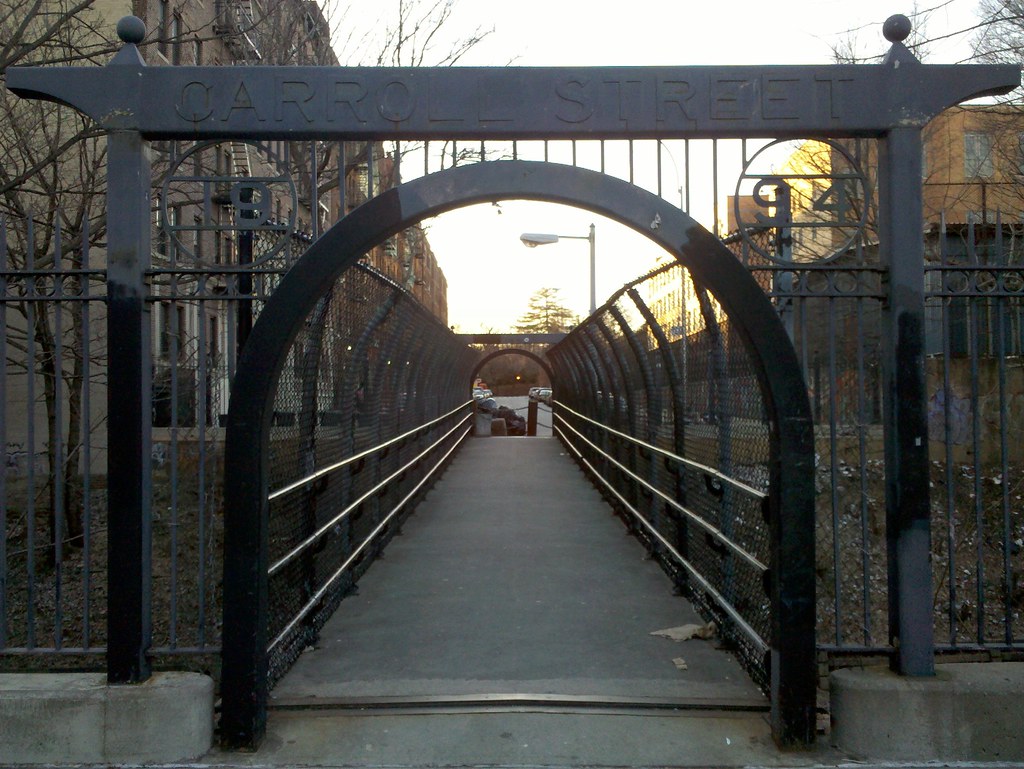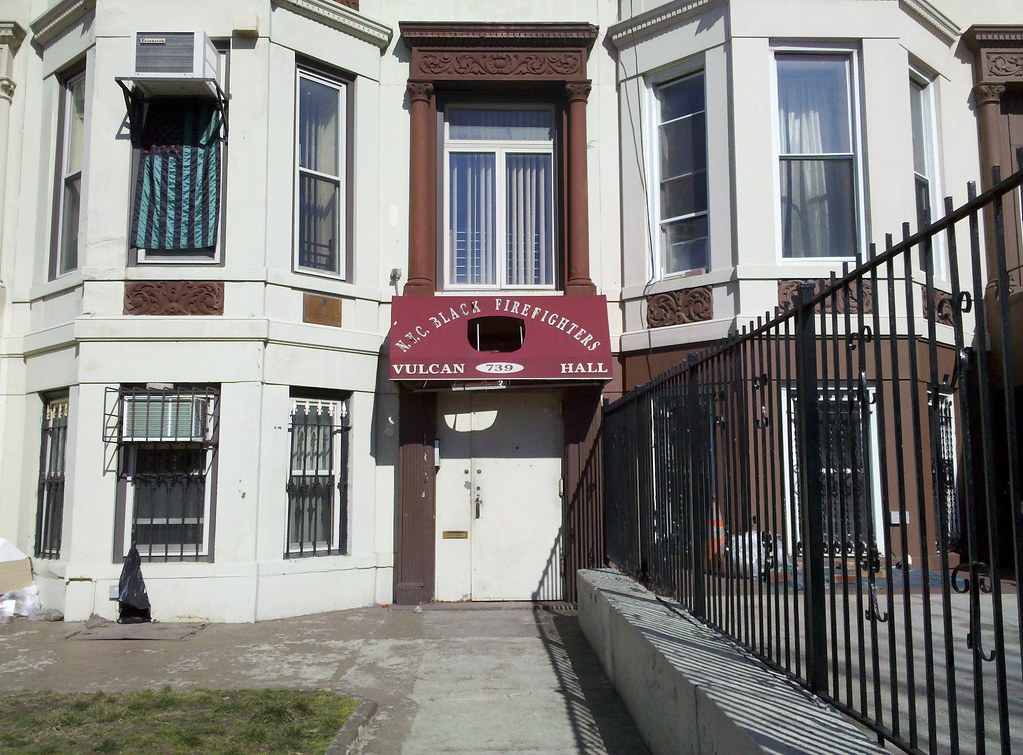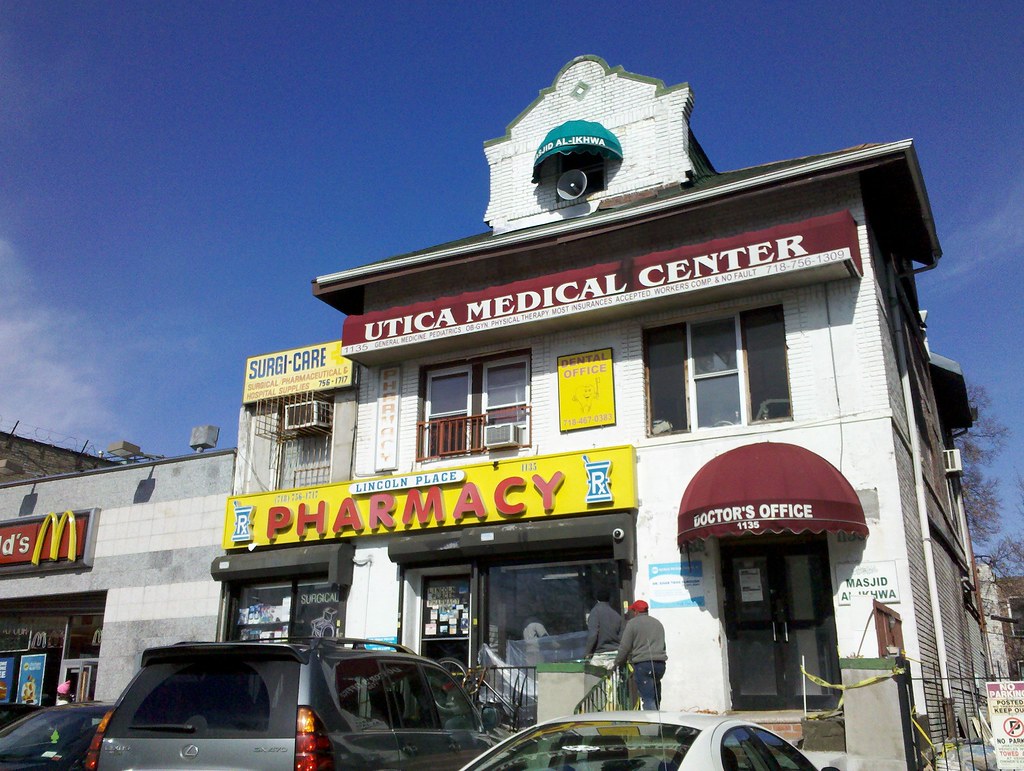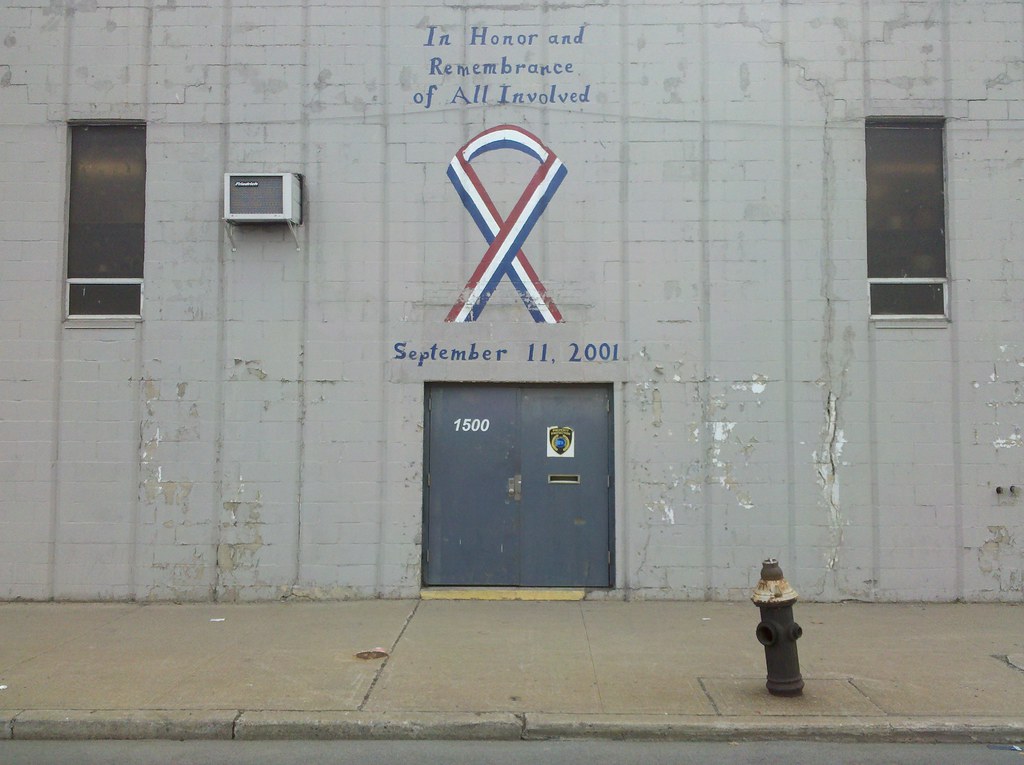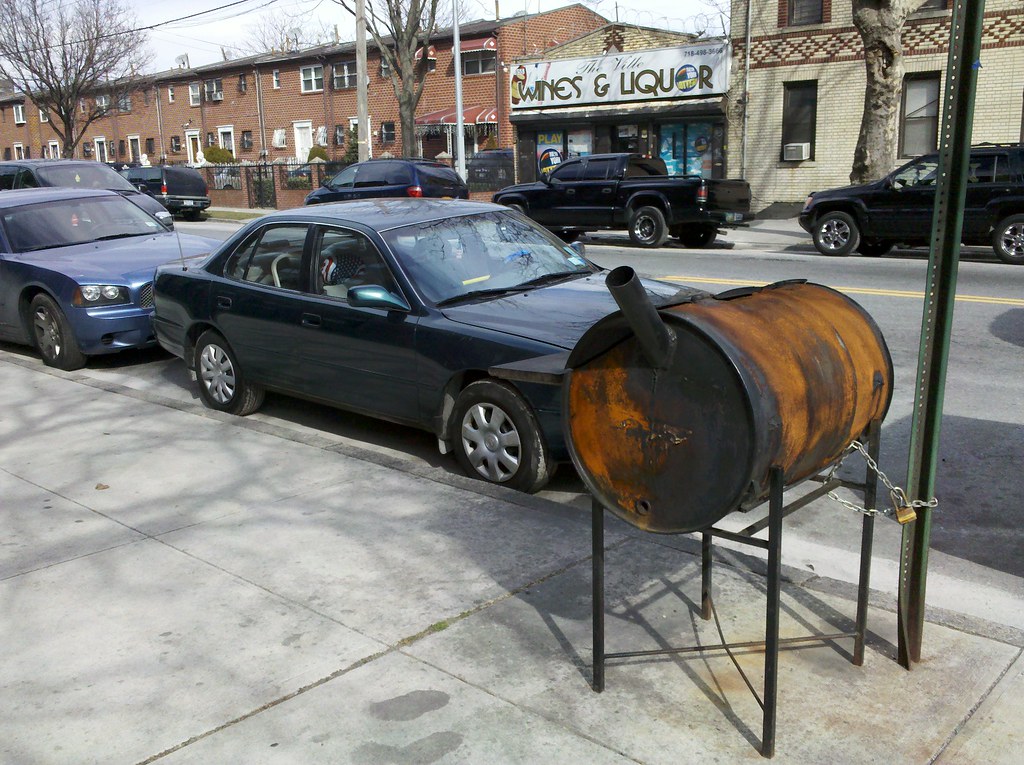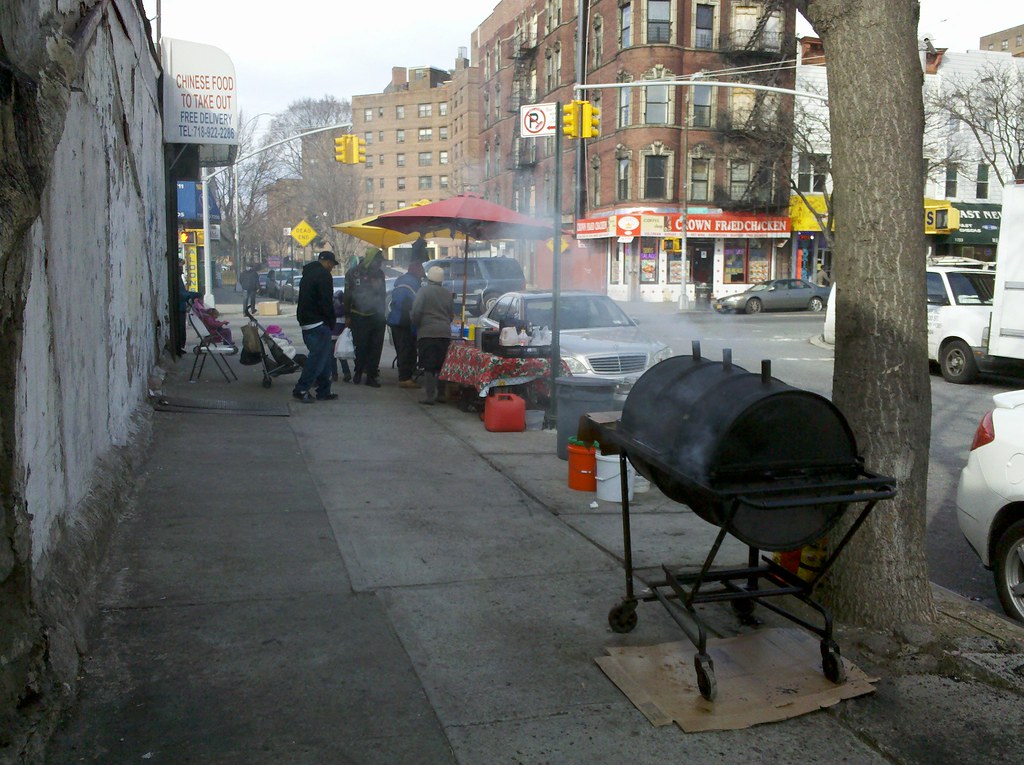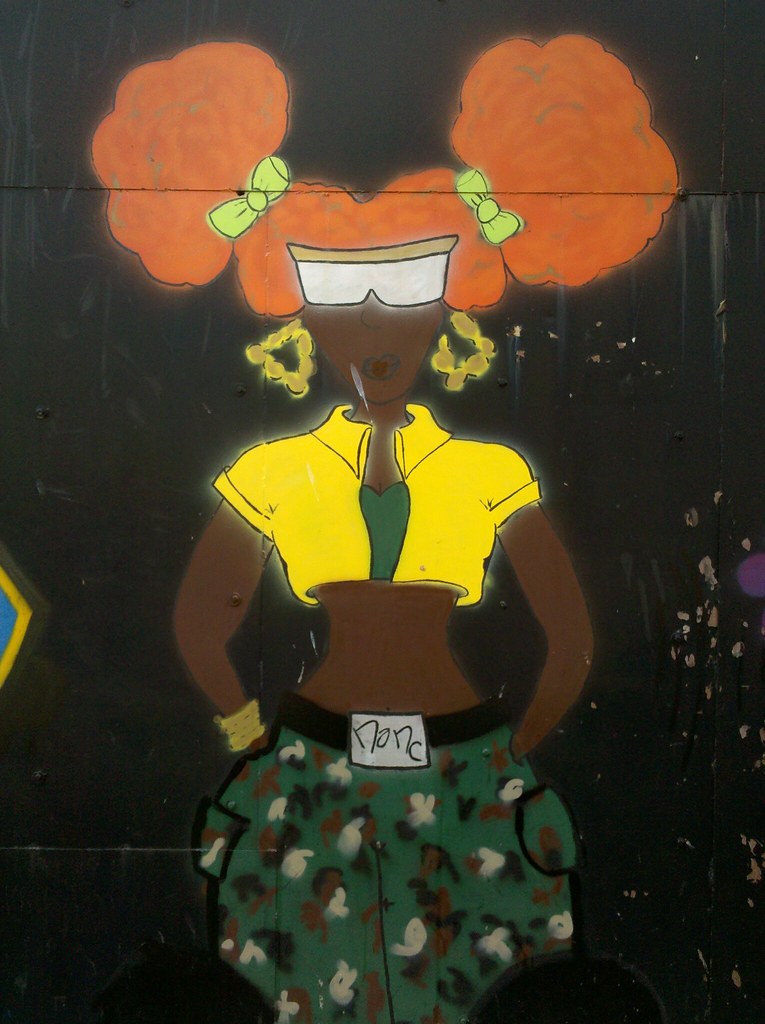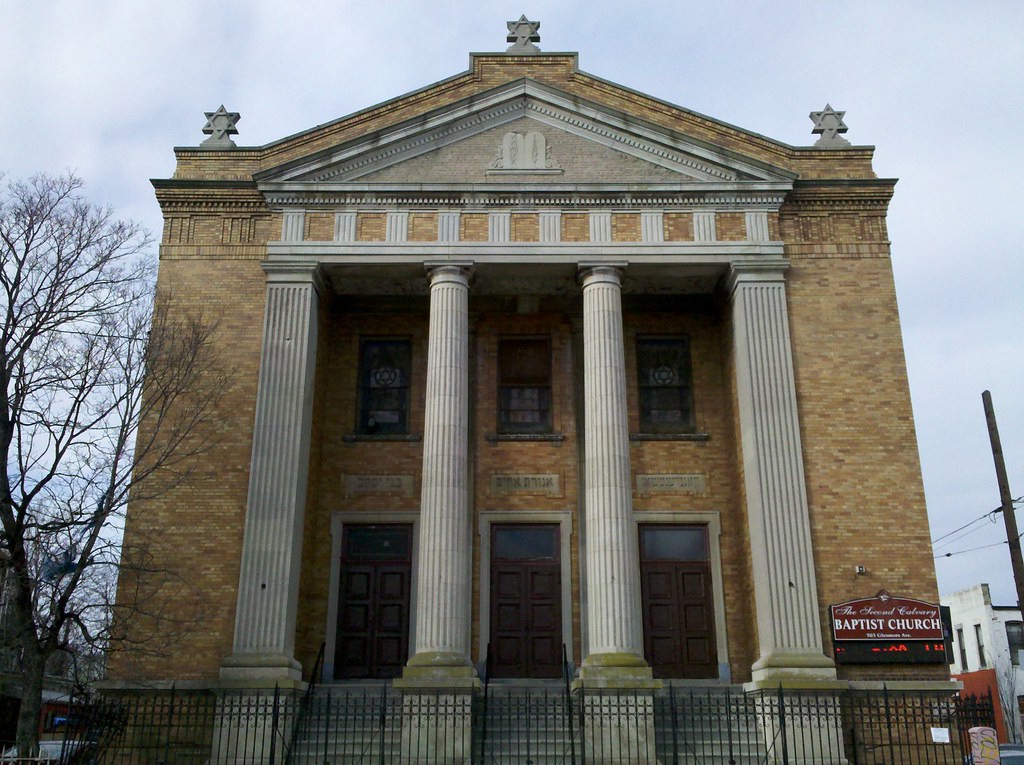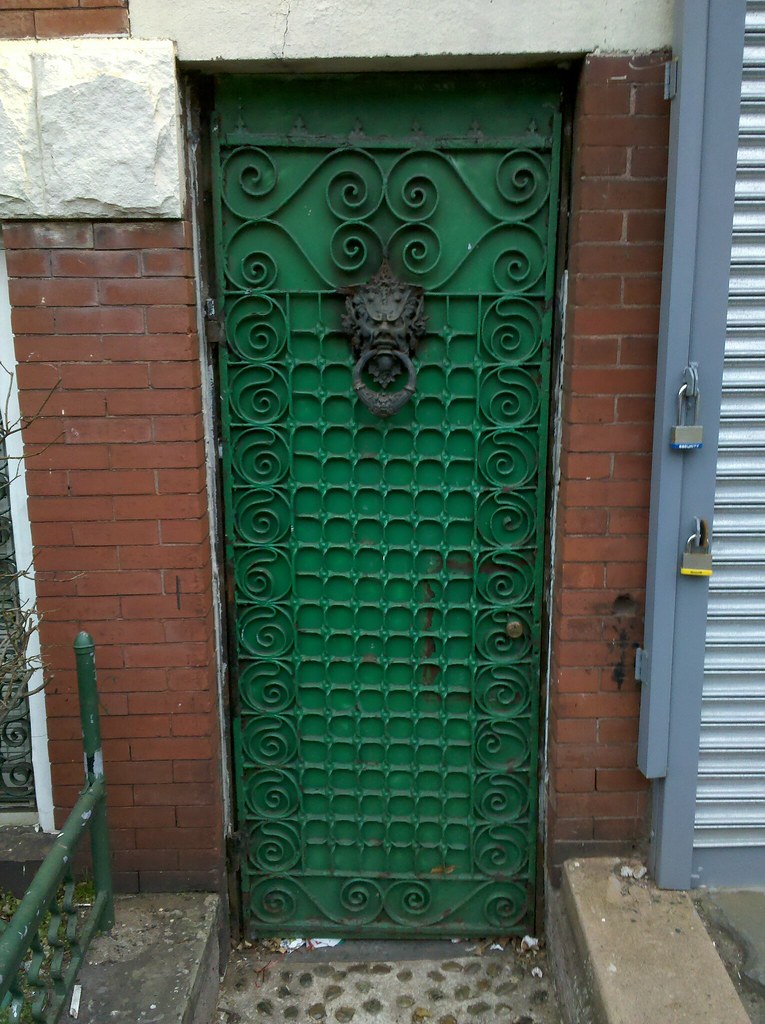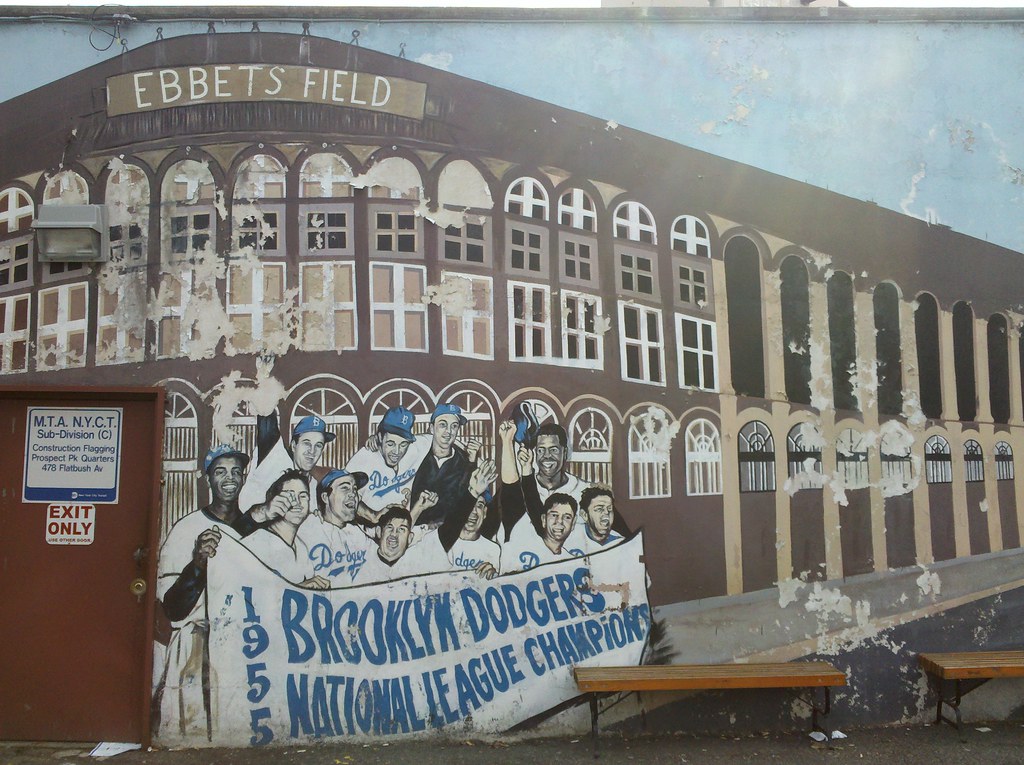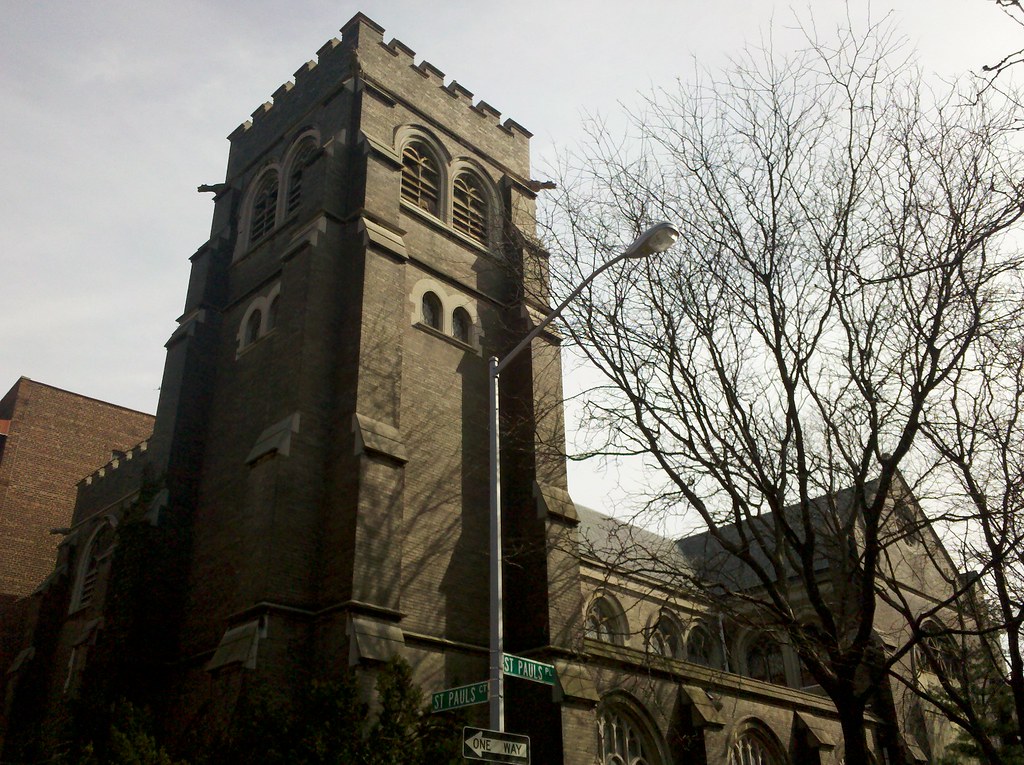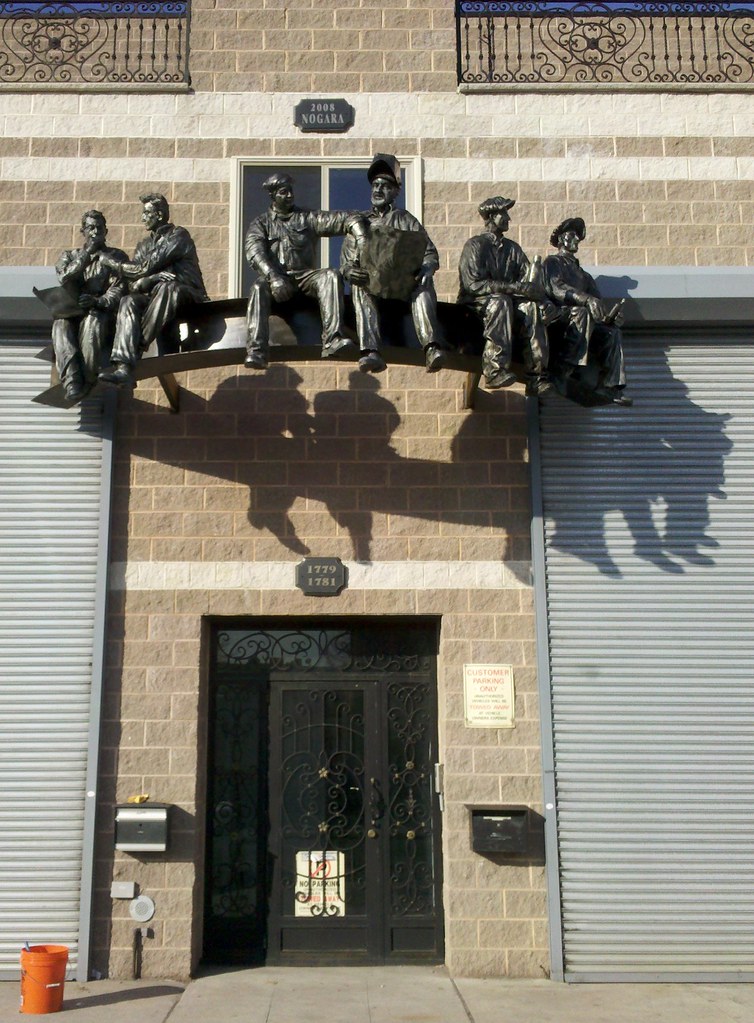
UPDATE: This is Piscopo Iron Works, relocated from Red Hook. (Thanks, Gigi!)
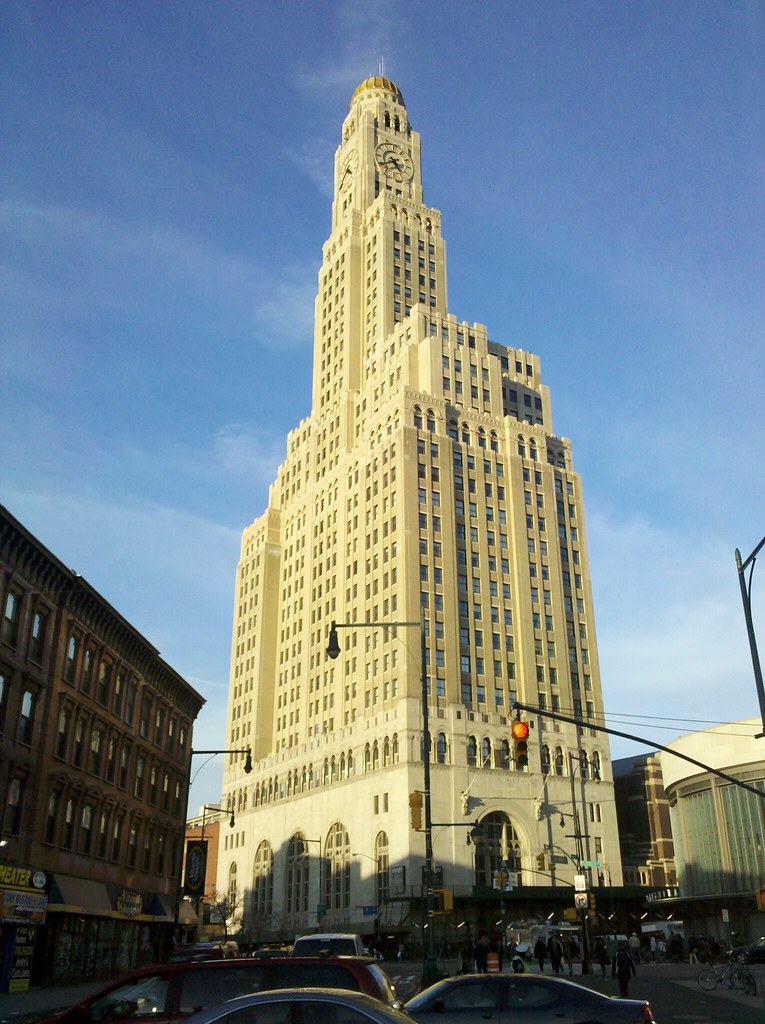
Until recently, the Williamsburgh Savings Bank Tower was the tallest building in Brooklyn.

To get a general sense of the geography of NYC's water supply system, check out this map of the watersheds and aqueducts. All of Brooklyn (and more than 90% of the city as a whole) is served by the Delaware and Catskill Aqueducts, which both flow into the Hillview Reservoir in Yonkers. The two tunnel systems that supply water to the city from the Hillview Reservoir (Water Tunnels No. 1 and No. 2) were completed in 1917 and 1936, respectively, and have been in constant use ever since. There is a third tunnel system from the Hillview Reservoir (you guessed it — Water Tunnel No. 3!) currently under construction, hundreds of feet below street level. Work began on this tunnel (the largest public works project in the city's history) in 1970, and, while parts of it are now in service, the entire project won't be finished until 2020 or later. Once the second stage of Tunnel 3 is activated (sometime next year, supposedly), Tunnels 1 and 2 will be able to be closed, drained, inspected, and repaired for the first time since they opened.
There was a major leak detected in one tunnel section of the Delaware Aqueduct in 1991, with up to 36 million gallons of water being lost every day. In 2003, a robotic submarine was sent through the aqueduct to inspect the leak, and repair work by deep-sea divers began in 2008.

Part of a much larger mural along Rogers Avenue. If you look at the mural in Street View, you can see that Google's automatic face-blurring software has blurred the faces of almost everyone honored in the mural!
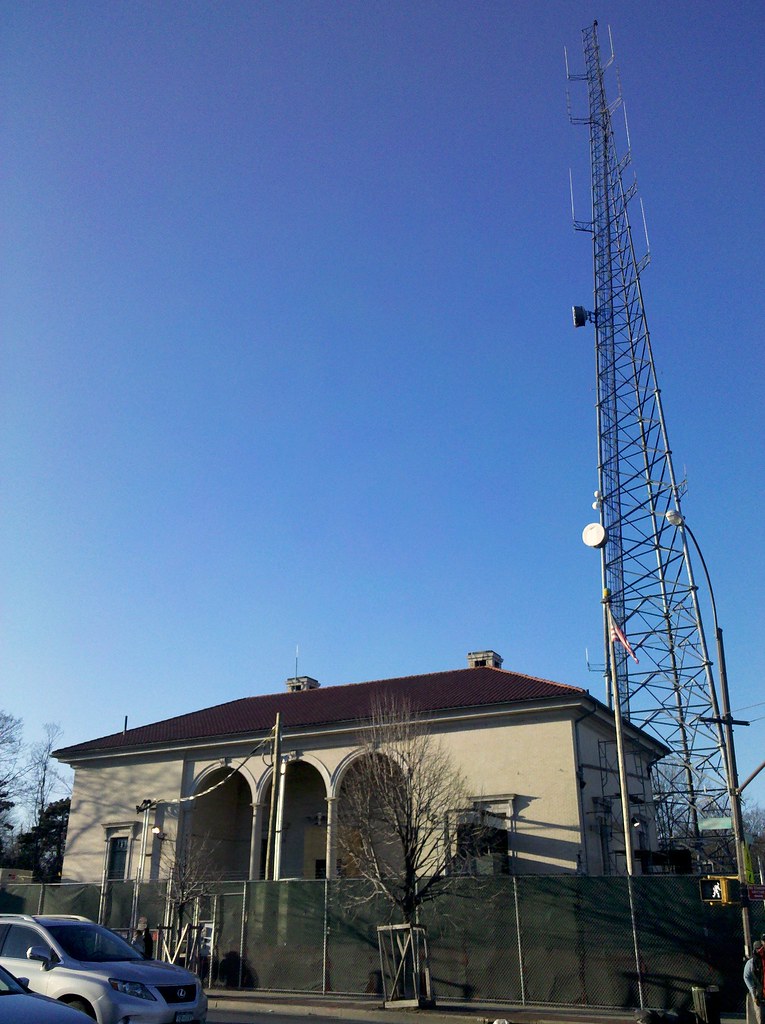
It's another FDNY communications dispatch office (here's a better comparison picture — look how similar they are!), or at least it was until 2008. Fittingly, the Russell D. Ramsey Memorial Triangle is catty-corner to this structure.
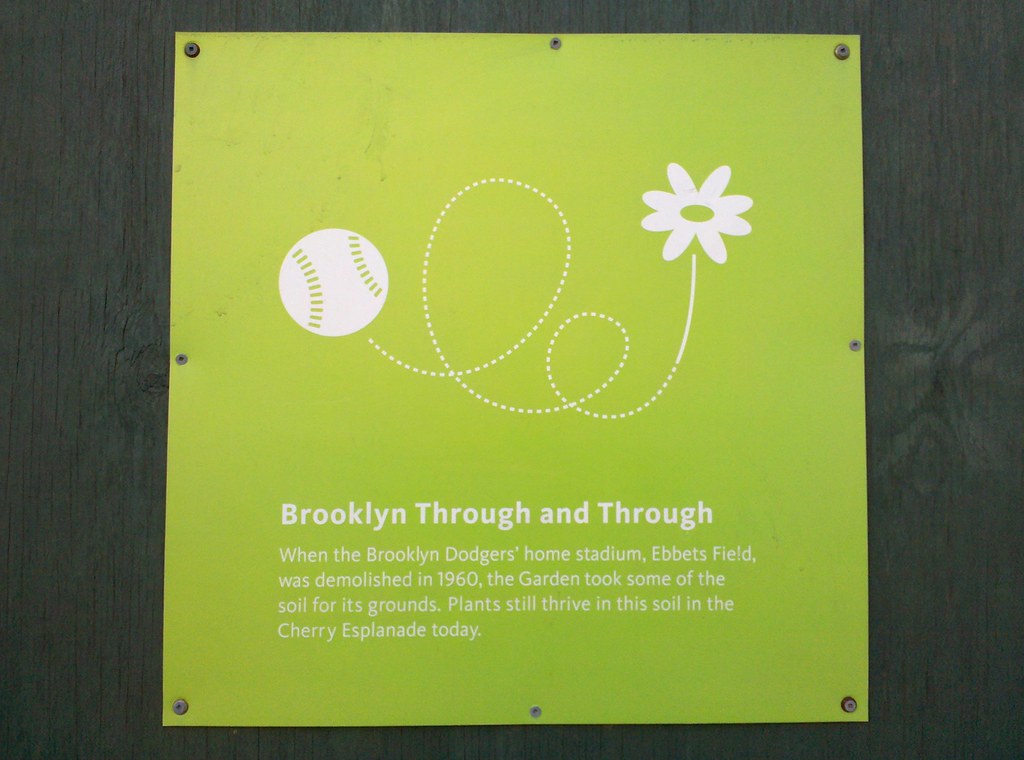
I had never heard this before, and I can't find any confirmation of the claim, but I hope it's true! There's not much left of Ebbets Field — its former site is occupied by high-rise apartments.
Something else I learned from this informative wall: "Before its original 39 acres were designated for a botanic garden in 1897, the Garden's land was covered in trash, construction rubble, and ashes from its history as a city dump."
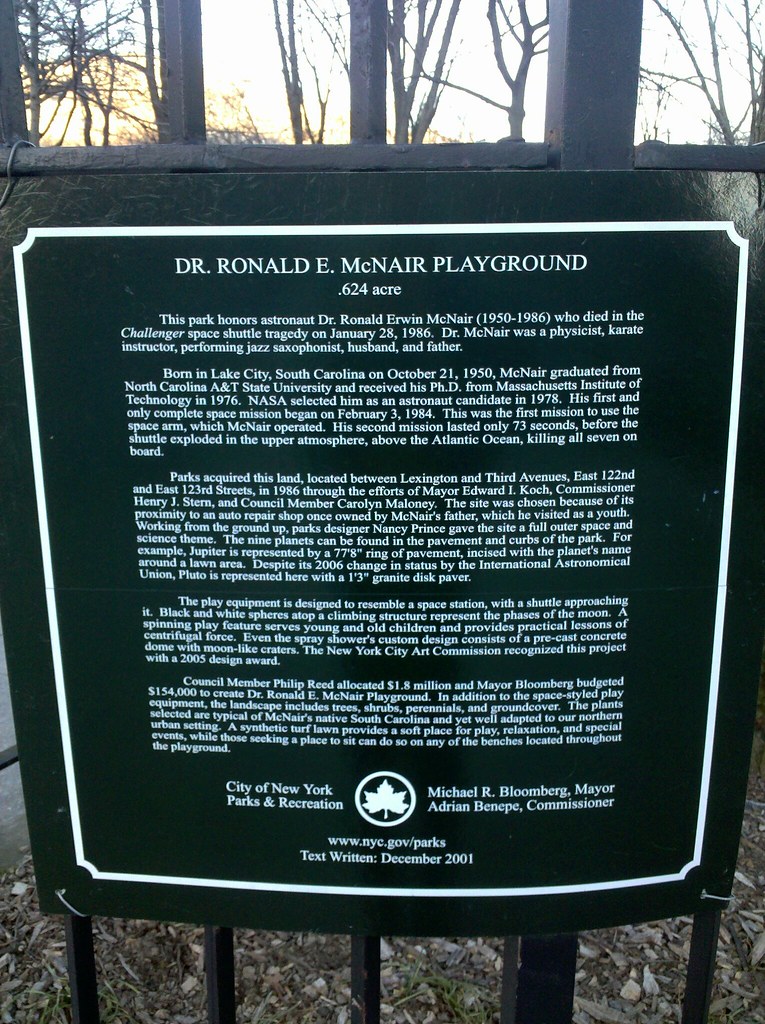
As indicated, this innovative playground is located between Lexington and Third Avenues, between East 122nd and East 123rd Streets, in Manhattan. This sign, however, is located about nine miles away, near the intersection of Washington Avenue and Eastern Parkway, in Brooklyn, at the entrance to Dr. Ronald E. McNair Park.
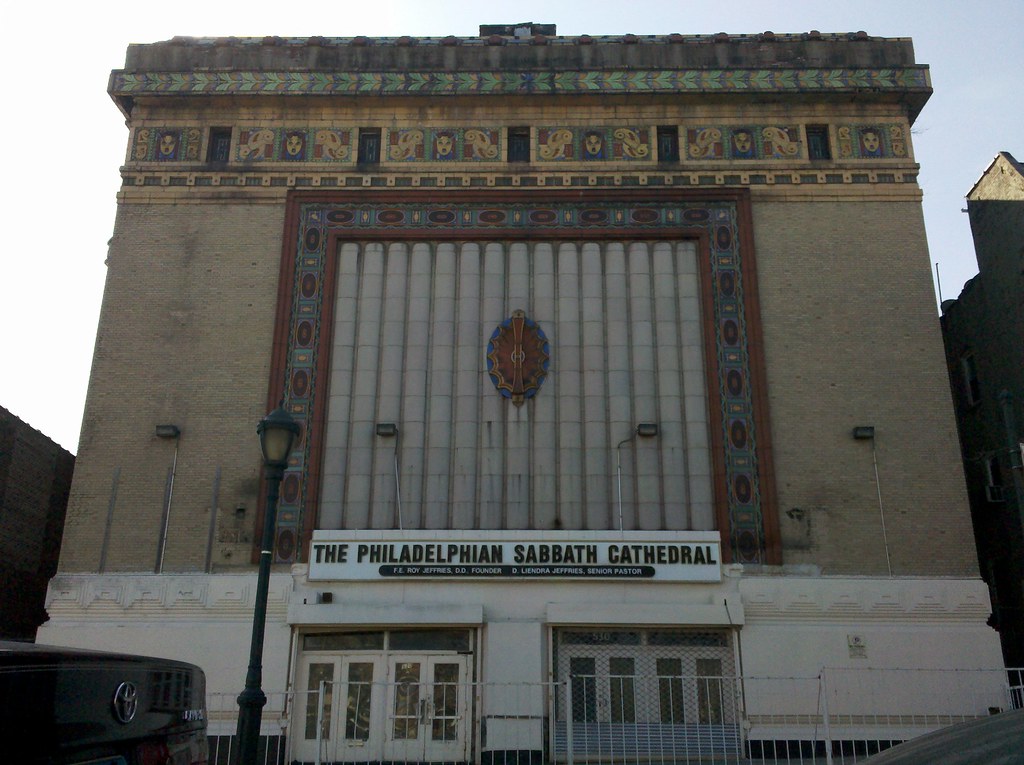
Formerly the Loew's Kameo Theatre. You can still see the old rooftop theater from a bird's-eye view.
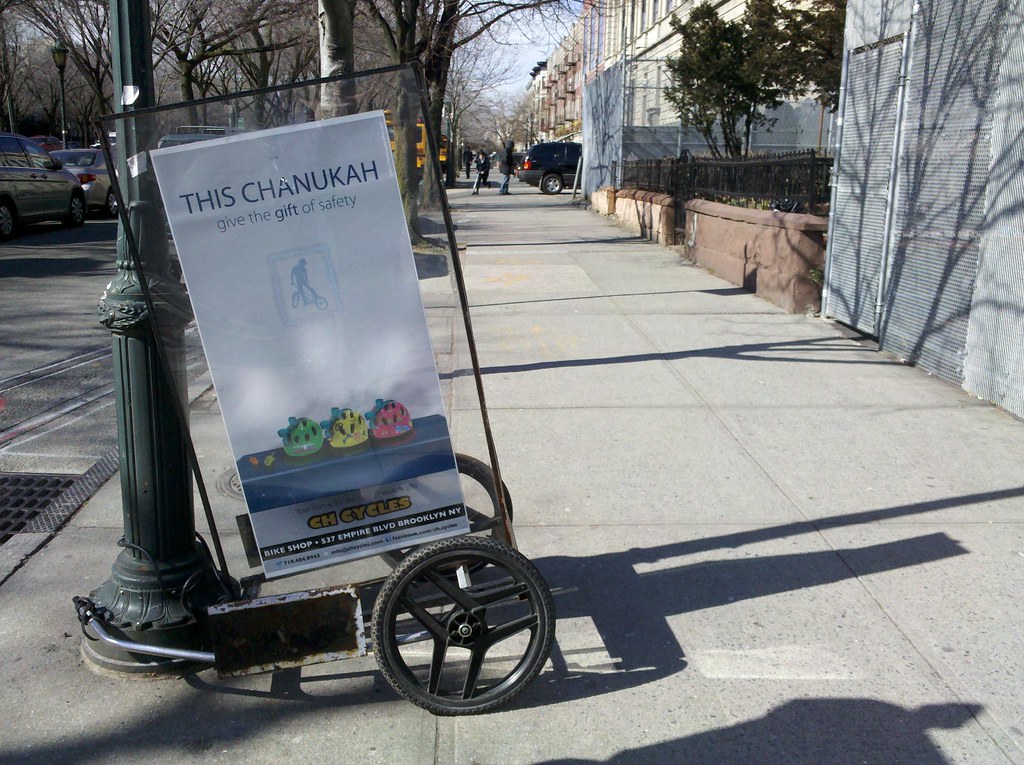
And what better way to advertise it than to obstruct a public sidewalk for months? This is like the evil twin of the Leonard & Withers Corner Library.

Ms. Dozier is one of a growing number of female morticians.
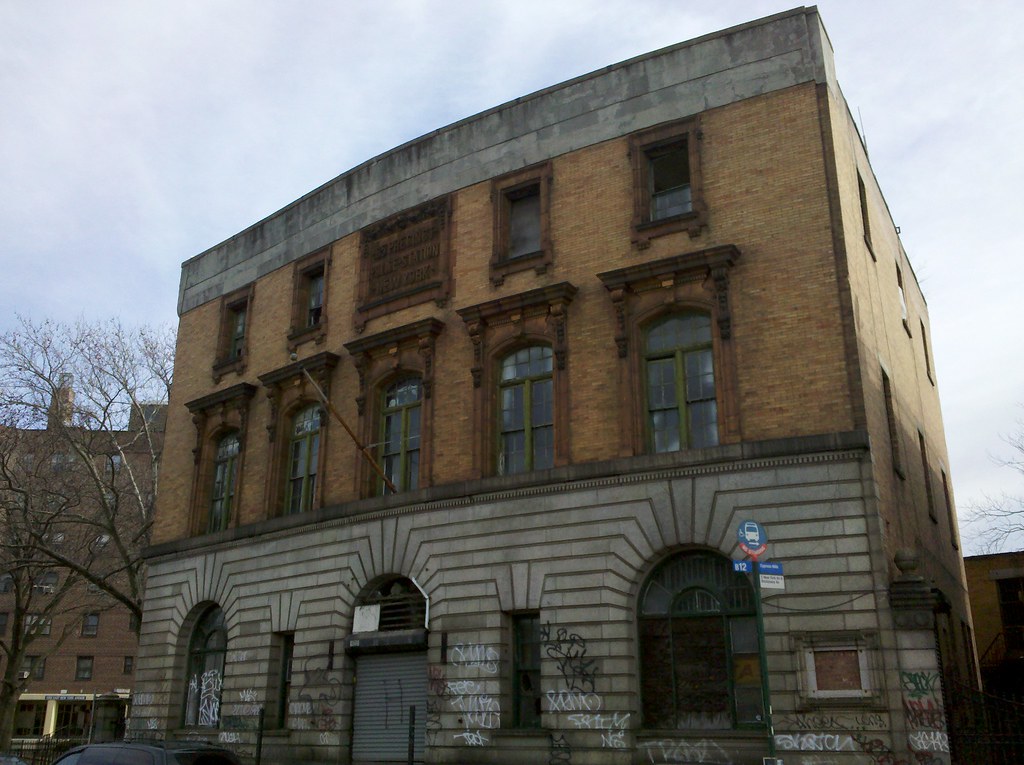
Mike Tyson spent a fair amount of time inside these walls during his delinquent youth in Brownsville.
The sign on the building reads "65 Precinct" — at some point, the 65th was changed to the 73rd Precinct, I believe in the 1920s.
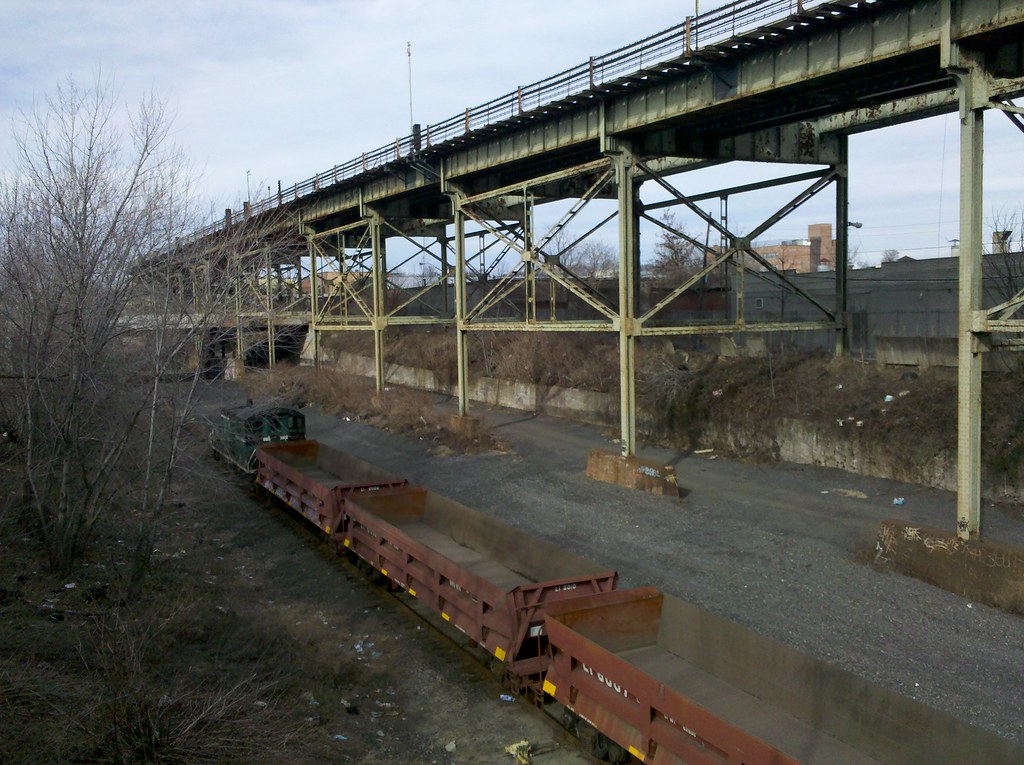
The Canarsie Line and the Bay Ridge Branch, respectively
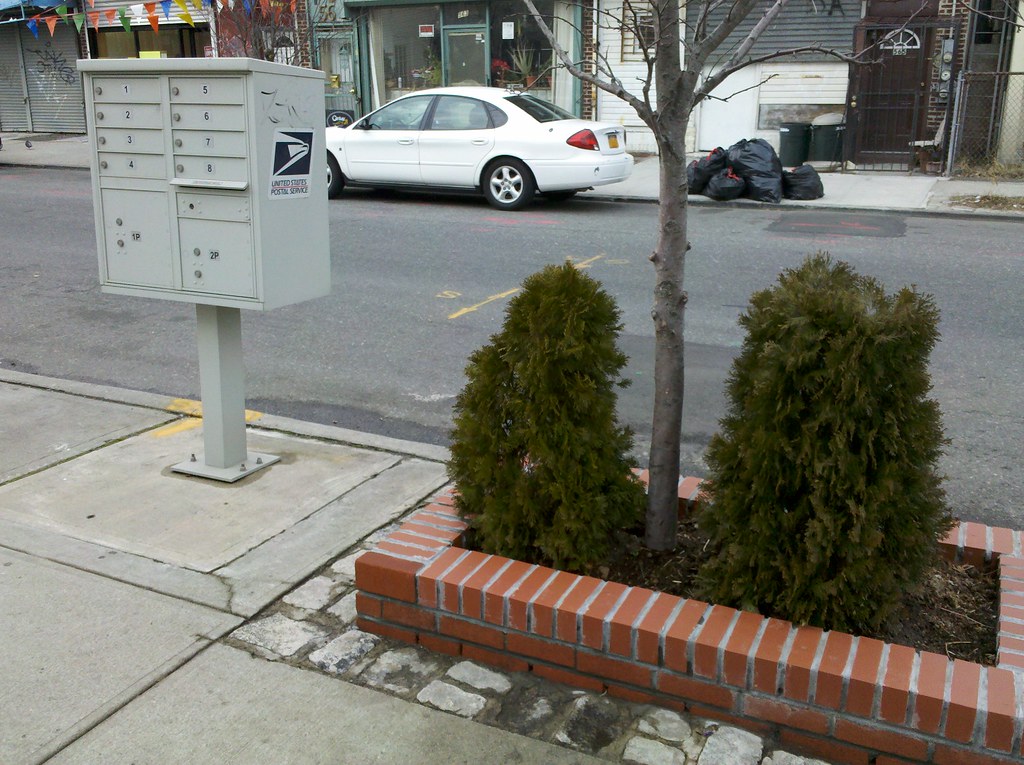
Walking through East New York today, I found myself immersed in a lengthy conversation with a Rasta named Bent. He had called out to me from across the street simply because he didn't recognize me. I thought that was kind of odd (isn't a city as big as New York bound to be full of strangers?), but then he did seem to know every single one of the people who happened to pass by during the course of our conversation. Wearing a button with the image of Haile Selassie, Bent mostly spoke to me about Ethiopia, with topics ranging from Amharic and Ge'ez to Beta Israel to the connections between Ethiopia and India.
He also talked about moving to East New York in the mid-'90s, when his house was the only thing standing on this side of the block (the adjacent lots were vacant garbage dumps). Many of his neighbors were saying they wanted to move somewhere safer and nicer, but he told me you shouldn't flee to a better neighborhood; you should make your own neighborhood better. He's spent a lot of time turning around his corner of the world: among other things, he's planted several trees out on the street, including the ones you see here. I wasn't sure our conversation was going to end before nightfall, but then Bent suddenly excused himself, saying he had to go because he is "on a mission." His parting words to me: "One love, one heart."
(He didn't want me to take his picture, which is a shame because his outfit perfectly matched the red, yellow, and green painted on his house.)

Actually, the L train runs on the left-hand side of this structure. The portion I'm standing under used to support the elevated Fulton Street Line.

This underpass takes you to the East New York LIRR station on the Atlantic Branch, which you can see just across the road (the outer lane of Atlantic Avenue), beneath the arches that support the elevated center lanes of Atlantic Avenue. The Atlantic Branch, which runs underground on either side of this station, rises to street level here to allow another rail line, the Bay Ridge Branch, to pass beneath it. As if that weren't enough, you can also see the elevated tracks of the Canarsie Line (L train), which cross Atlantic Avenue just to the left of this photo (where the previous photo was taken), in the background. Take a look at a bird's-eye view to get a better sense of the area. (Things don't get any simpler at Broadway Junction, just north of here.)

As mentioned previously, this enormous building is currently a homeless shelter. But what was its original purpose? According to the New York Times:
After the Civil War, a number of armories were built around the city to assuage the fears of middle- and upper-class New Yorkers who had seen Civil War draft riots and the Tompkins Square Riots of 1873. A growing immigrant population and a depression begun by the panic of 1873 fueled concern over unrest. Between 1880 and 1913, New York and Brooklyn sponsored the construction of 29 armories, including the Bedford-Atlantic Armory, built for the 23rd Regiment in Brooklyn.
The armory was designed by Isaac G. Perry, chief architect of the State Capitol in Albany. Construction began in 1889 and was completed in 1902 on a building whose 50,000-square-foot drill hall provided open space for training recruits. The vast space also allowed for functions like dances and dog shows.
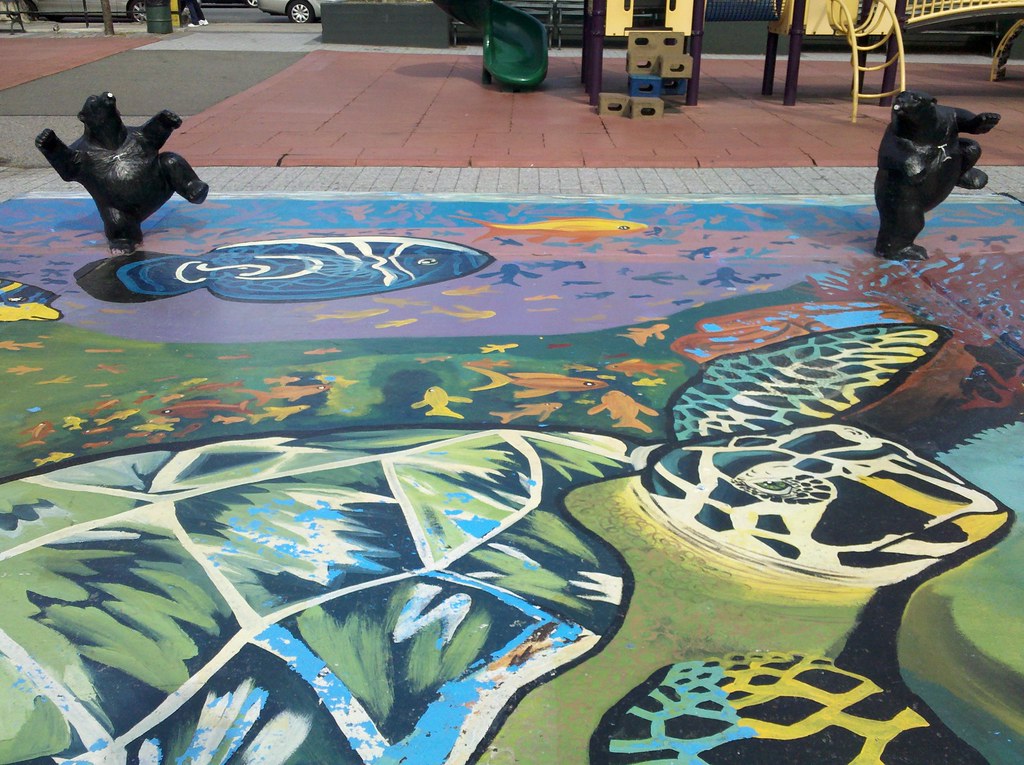
Located right across the street from the former Ebbets Field. The park superintendent told me that one day last year he saw a Jehovah's Witness carrying a copy of The Watchtower with a beautiful painting of sea creatures on its cover. He found out who the artist was and asked him to replicate the painting, on a much larger scale, in the playground. It looks beautiful, but there turned out to be a problem: he used the wrong kind of paint, and now the surface becomes really slippery when it gets wet. The super said he'll have to figure out a solution before summer, when the bears start shooting water out of their mouths.
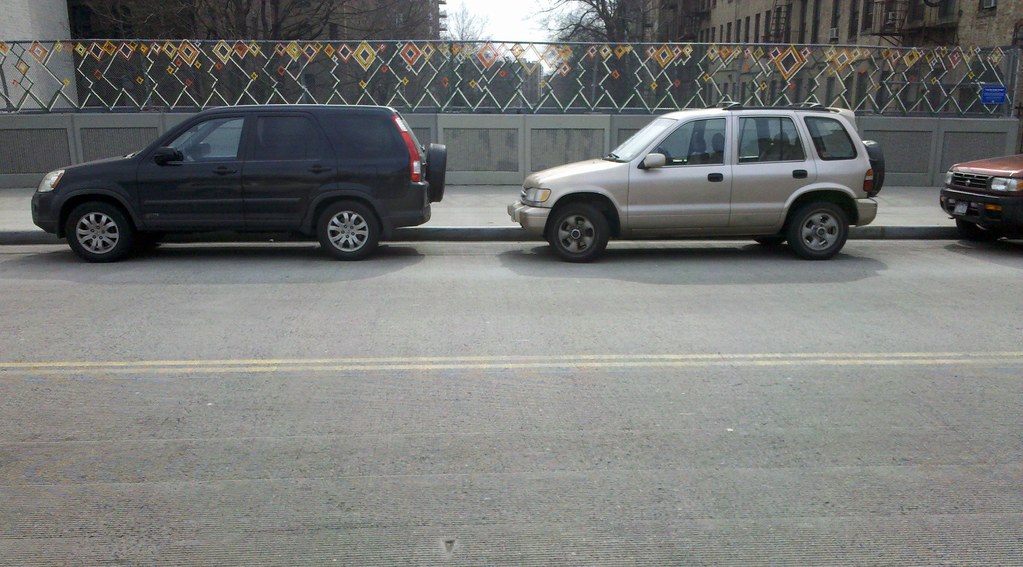
I liked it until I read the description on that blue sign over there: "Lincoln Road Serape is a 70-foot weaving made of plastic ribbons woven into the chain link fence to create a colorful swathe that connects the neighborhood. The installation is based on weaving blanket designs of diamond shapes and zig-zags woven by Navajo craftspeople."
To be fair to the artist, she doesn't use any of that language on her website, leading me to believe this may be another case of terrible DOT writing.
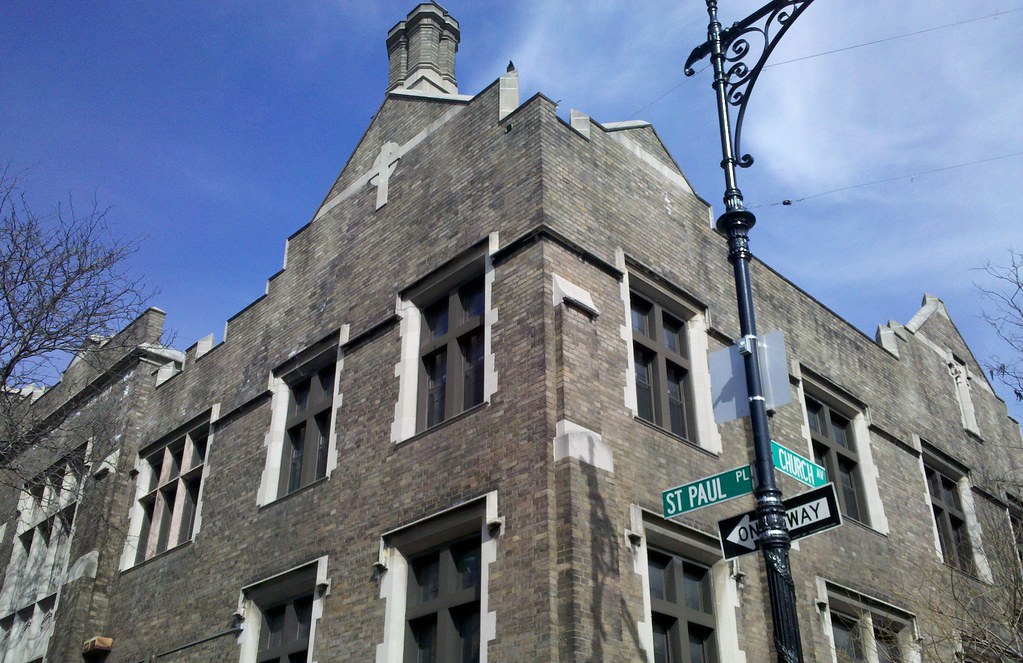
I'm feeling pretty good about my previous guess.
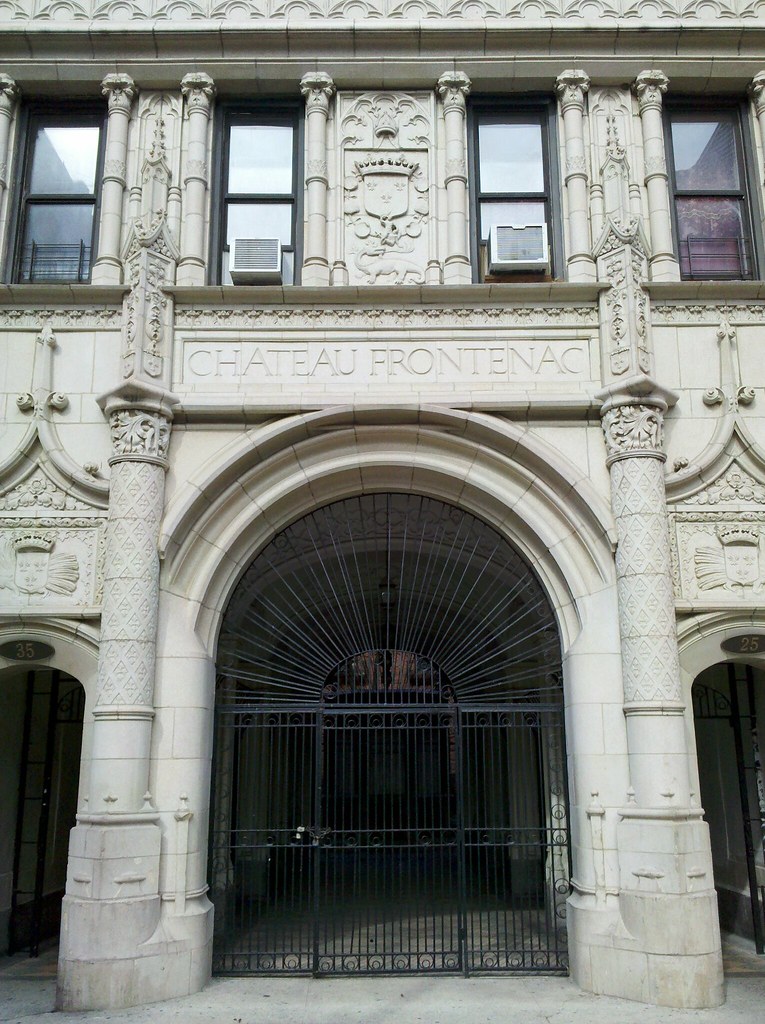
It's a pretty good imitation of the original (especially the original original).
P.S. This building is located on a two-block-long street named Tennis Court, which once ran through an enclave of houses called Tennis Court, and which still leads to some actual tennis courts at the Knickerbocker Field Club. The Knick, established in 1889, is largely hidden from the street, tucked out of sight behind three large 20th-century apartment buildings.



